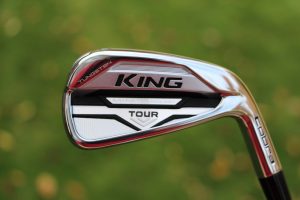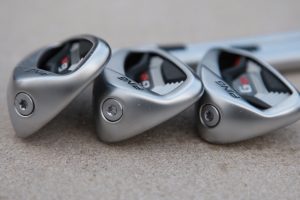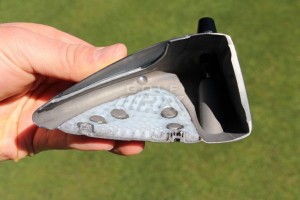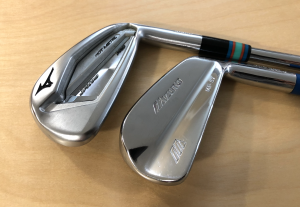Are new clubs really better? (GolfWRX.com)
“Are new clubs really better?”
It’s the end all be all question of the golf equipment industry and depending on who you talk to, you are going to get a variety of answers. But speaking from a number of perspectives including as a club-fitter, equipment junkie, and general observer of the industry, the answer is simple but not straight forward.
Yes, new clubs are by every account better, honestly did you really expect a different answer? But when we go into the how and why it gets more complicated and depending on the target golfer and what engineers are trying to accomplish, better doesn’t always mean better for YOU… but we’ll get to that in a moment.
Thanks to ever-improving technology, the processes around designing, and prototyping of golf clubs, along with evolving manufacturing processes, designers now more than ever have the ability to control the parameters of a golf club to achieve the desired goal. One great example of this is Cobra using Metal Injection Molding or MIM for short to produce their MIM line of wedges and most recently the King Tour irons – which are the first irons to be built using this method.

Cobra King Tour MIM 4-iron – cavity view
MIM is a process that has been used to produce parts in other industries for some time now but based on the economy of scale and what the market will accept as far as pricing it has only recently been used in the golf equipment space. Some of the benefits of this process are:
The end results in the case of the King Tour is an iron that not only looks the part but also delivers in other categories that golfers value, including looks and feel. This creates a performance advantage for the target golfer and once properly fit with the rest of the components you have a better golf club than the one that came before it.
Another example of ever-improving clubs thanks to design changes are the Ping G410 irons.

To change the way to get clubs up to final head weight, for Ping this usually meant using a CTP (custom tuning port) in the middle of the cavity, but for the G410 they changed it up and moved the weight away from the middle and to the perimeter. This allowed the engineers to create a club that is not only more forgiving but is smaller compared to the previous generation – meaning for golfers wanting game improvement irons in a smaller package Ping was able to deliver.

Every time a new club gets released we hear about how it’s longer, faster, straighter – but how does this actually translate to golfers and how can they continue to get better within the rules of golf. It comes down to simple physics, and engineers’ ability to continually work with manufacturing partners to maximize the potential a driver has.
If you were to take a driver from 10 years ago and compare it to a modern one – off of the sweet spot and under the correct circumstances, you’re not going to find a massive difference and almost any engineer being honest will tell you that. But golf isn’t a game of perfect and what we have seen over the last 10 years are drivers that deliver more optimal results when hit away from the sweet spot. For regular golfers to PGA Tour players, it leads to better results and a smaller standard deviation when not hit perfectly, which leads to consistently longer drives over the long hauls.
This doesn’t even start to get into the discussion of optimization through proper fitting using a launch monitor, but that is the next step for those looking to find performance advantages.

With all this “rah-rah” about how things are better, it’s important to offer the counter-argument that for some players better, or newer, isn’t always better, and there is truly no more perfect example than the clubs which Tiger Woods continues to use.
Tiger has famously used a set of blade irons dating back to college and for essentially the last 25 years has continued to use the same style of iron because of the benefits they offer to him as an individual. Blade irons are unforgiving, but a nice way to say it is they are “workable” and this workability allows golfers who want maximum control to have that option.
Can faces be made faster? Yes. Can MOI be increased to reduce the variation between strikes? Yes. But if those aren’t the characteristics a golfer is looking for in their clubs; then better isn’t always better.
Pokračovat ve čtení...
“Are new clubs really better?”
It’s the end all be all question of the golf equipment industry and depending on who you talk to, you are going to get a variety of answers. But speaking from a number of perspectives including as a club-fitter, equipment junkie, and general observer of the industry, the answer is simple but not straight forward.
Let’s cut to the chase
Yes, new clubs are by every account better, honestly did you really expect a different answer? But when we go into the how and why it gets more complicated and depending on the target golfer and what engineers are trying to accomplish, better doesn’t always mean better for YOU… but we’ll get to that in a moment.
Thanks to ever-improving technology, the processes around designing, and prototyping of golf clubs, along with evolving manufacturing processes, designers now more than ever have the ability to control the parameters of a golf club to achieve the desired goal. One great example of this is Cobra using Metal Injection Molding or MIM for short to produce their MIM line of wedges and most recently the King Tour irons – which are the first irons to be built using this method.

Cobra King Tour MIM 4-iron – cavity view
MIM is a process that has been used to produce parts in other industries for some time now but based on the economy of scale and what the market will accept as far as pricing it has only recently been used in the golf equipment space. Some of the benefits of this process are:
- The ability for engineers to fully customize the materials used to meet the desired performance characteristics of the part
- Extremely tight tolerances for weight and geometry
- The ability to create parts with complex geometries
The end results in the case of the King Tour is an iron that not only looks the part but also delivers in other categories that golfers value, including looks and feel. This creates a performance advantage for the target golfer and once properly fit with the rest of the components you have a better golf club than the one that came before it.
Another example of ever-improving clubs thanks to design changes are the Ping G410 irons.

To change the way to get clubs up to final head weight, for Ping this usually meant using a CTP (custom tuning port) in the middle of the cavity, but for the G410 they changed it up and moved the weight away from the middle and to the perimeter. This allowed the engineers to create a club that is not only more forgiving but is smaller compared to the previous generation – meaning for golfers wanting game improvement irons in a smaller package Ping was able to deliver.
But what about drivers?

Every time a new club gets released we hear about how it’s longer, faster, straighter – but how does this actually translate to golfers and how can they continue to get better within the rules of golf. It comes down to simple physics, and engineers’ ability to continually work with manufacturing partners to maximize the potential a driver has.
If you were to take a driver from 10 years ago and compare it to a modern one – off of the sweet spot and under the correct circumstances, you’re not going to find a massive difference and almost any engineer being honest will tell you that. But golf isn’t a game of perfect and what we have seen over the last 10 years are drivers that deliver more optimal results when hit away from the sweet spot. For regular golfers to PGA Tour players, it leads to better results and a smaller standard deviation when not hit perfectly, which leads to consistently longer drives over the long hauls.
This doesn’t even start to get into the discussion of optimization through proper fitting using a launch monitor, but that is the next step for those looking to find performance advantages.
When better isn’t better

With all this “rah-rah” about how things are better, it’s important to offer the counter-argument that for some players better, or newer, isn’t always better, and there is truly no more perfect example than the clubs which Tiger Woods continues to use.
Tiger has famously used a set of blade irons dating back to college and for essentially the last 25 years has continued to use the same style of iron because of the benefits they offer to him as an individual. Blade irons are unforgiving, but a nice way to say it is they are “workable” and this workability allows golfers who want maximum control to have that option.
Can faces be made faster? Yes. Can MOI be increased to reduce the variation between strikes? Yes. But if those aren’t the characteristics a golfer is looking for in their clubs; then better isn’t always better.
Pokračovat ve čtení...








